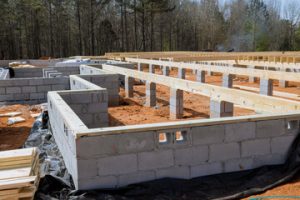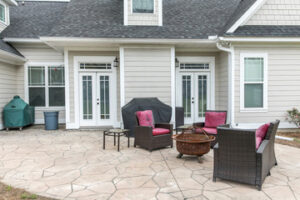If you’ve noticed cracks in your walls and floors or see other signs of foundation problems, it’s important to act quickly. Foundation repair methods like slab jacking and high-density polyurethane foam can help stabilize your home and prevent further damage.

Foundation experts will inspect your property for signs of settling and recommend a solution that fits your needs and budget. Click Here for more information.
Cracks in foundation walls are an inevitable part of the aging process and can happen in any home. However, some cracks are more serious than others. Structural cracks can threaten the structural integrity of a home if not repaired promptly. Non-structural cracks, on the other hand, may only cause cosmetic problems such as moisture intrusion or poor indoor air quality.
When determining the severity of a crack, its width and depth is important. Wider cracks are generally more concerning than narrower ones. It’s also important to note whether the crack is active or stable. If it is growing over time, this is a sign that you need to contact us for a professional inspection and repair.
Hairline cracks that appear in the basement or concrete slab are often caused by concrete shrinkage during curing. This is a common issue and does not pose a serious threat unless the crack becomes wider over time. Often these cracks are only cosmetic in nature and can be easily patched with epoxy sealant.
If a crack is wider than 18 inch and appears in a load-bearing wall, it is a sign that there is a more significant problem with your foundation. Horizontal cracks are a particular concern and should be repaired immediately. They can indicate that hydrostatic pressure is building up against your foundation walls, which can eventually lead to foundation failure if not corrected.
These cracks can often be repaired with push pier or helical pier underpinning solutions. Contact us to schedule an evaluation and quote for these types of repairs.
Water Invasion
When a foundation or piles are damaged, water seepage can lead to a variety of problems. If not addressed promptly, these issues can compromise the structural stability of your home and depreciate its value. NZ CCS offers a range of repair methods to repair foundations and piles that are compromised by water damage, including underpinning and helical piers.
When soil around a foundation becomes oversaturated with water, it creates a phenomenon called hydrostatic pressure. This pressure exerts force against the foundation walls and can cause them to bow, crack or shift. It’s particularly problematic in areas with clay soils, which are more likely to absorb and expand with water.
Another common sign of water invasion in your foundation is the presence of mold or mildew. These substances grow best in damp environments and are a clear indication that there’s an issue with your foundation that needs to be addressed.
Water can also invade through cracks in the foundation, or through gaps that haven’t been sealed properly. These openings can also be used by tree roots to penetrate your foundation and cause further damage.
Lastly, if you notice that parts of your basement or crawl space feel humid, this could be a sign that there’s an issue with the foundation. Moisture in the foundation can create a breeding ground for pests like termites, wood rot and mildew, which are not good for your home.
If you suspect that your foundation is at risk of water damage, it’s important to seek expert advice as soon as possible. There are a number of things you can do to protect your foundation and piles from this threat, such as ensuring there’s sufficient drainage in the area surrounding your property. Adding French drains, a sump pump and cleaning your gutters will help to keep the soil dry and prevent water accumulation. You should also make sure that at least 6 inches of your foundation is exposed to the elements, so it can dry quickly if there’s ever a problem. This will help to avoid the formation of mold and mildew, wood rot, termite infestations and pest attraction.
Foundation Shifts
Foundations settle into the soil in which they’re built. This is not necessarily a bad thing. In fact, it’s often necessary to maintain the structural integrity of your home. But, it can cause problems if the house moves unevenly. If you’re experiencing significant shifting or sinking, it is a serious issue that requires immediate attention. Fortunately, there are several effective repair solutions available to mitigate foundation movement and prevent further damage.
The most common causes of foundation settlement are changes in soil conditions, moisture levels, and imbalances in the structure. A shift in your foundation may also be the result of a tree root growing into the soil or an earthquake. The best way to identify a problem is to look for signs of shifting in your home, including sloping floors and walls, sticking doors and windows, and other structural problems.
A common mistake homeowners make is to apply waterproofing paint to cracks in their foundation wall, which can mask the problem but not fix it. This method is ineffective because it doesn’t address the root cause of the cracks, and will not hold up against future shifting.
Another common DIY error is to pour concrete in a crack, which can actually cause more shifting and structural damage. While this is a quick and affordable solution, it is not permanent. It is important to contact a professional to assess the situation and find the right solution for your home.
Other repair methods include grouting and mudjacking, which both stabilize and support the structure. Grouting fills minor cracks and prevents moisture damage, while mudjacking targets larger sunken areas of the foundation to lift them back into place.
Preventive measures include ensuring the proper drainage of your home, and managing your yard to avoid oversaturation with water near your foundation. It is also important to keep trees and shrubs away from your foundation, as roots can extend beneath the surface. Finally, regular inspections and maintenance from a foundation contractor can help prevent damage to your home. Contact a foundation specialist to schedule an inspection and estimate today.
Structural Damage
Structural damage to a foundation may be caused by soil movement, water infiltration, or construction defects. While non-structural cracks can be repaired with epoxy injection or carbon fiber reinforcement, structural cracks are a clear sign that the foundation is deteriorating and need to be repaired as soon as possible. These cracks can be horizontal, vertical, or stair-step in appearance and occur throughout the foundation, walls, or floor. Leaving these issues unaddressed can lead to more severe cracking, drywall collapse, and other home problems.
Stair-step cracks, which appear in a stair-like pattern, are almost always structural cracks. These cracks are a result of the foundation shifting and should be repaired by a professional. Other signs of structural damage include bowed walls, which are often a result of untreated foundation movement. These issues can be repaired with carbon fiber strips or steel, but only if the problem is detected early before too much movement has occurred.
Settling is another common cause of structural damage to a foundation. This happens when the weight of the structure compresses the soil underneath. Some amount of settling is expected, but if the settlement is uneven it can put pressure on your foundation.
If you have a bowed wall, you can typically stabilize it with carbon fiber strips or concrete anchors. You can also repair a sagging basement by installing helical piers or pilings. These are installed underground, either by digging and drilling (for piers) or by driving them into the ground with hydraulic pressure (for pilings).
If you’re considering buying a home with a foundation issue, it’s important to get any cracking inspected by a professional foundation repair contractor or a geotechnical engineer. They will be able to tell you whether the cracks are structural or non-structural, and will be able to give you information about how serious the settlement is and the best course of action to take. They can also advise you about any potential issues with the soil that might be causing the shift in the foundation. They’ll also be able to provide you with an estimate of the cost of repairs, which should be factored into your purchase price.
